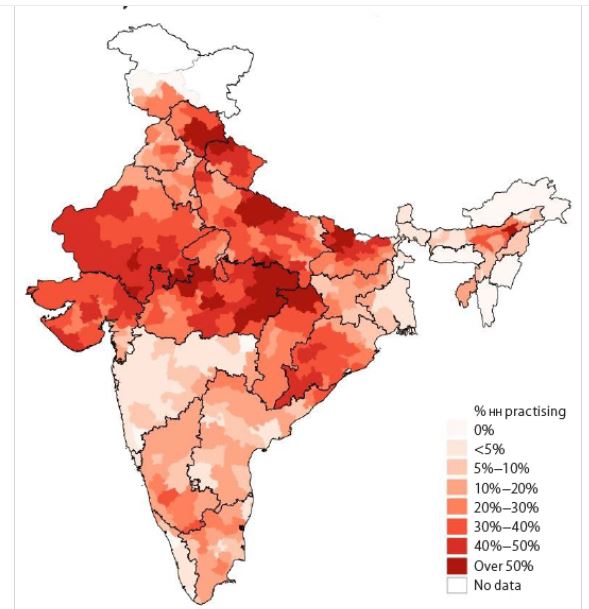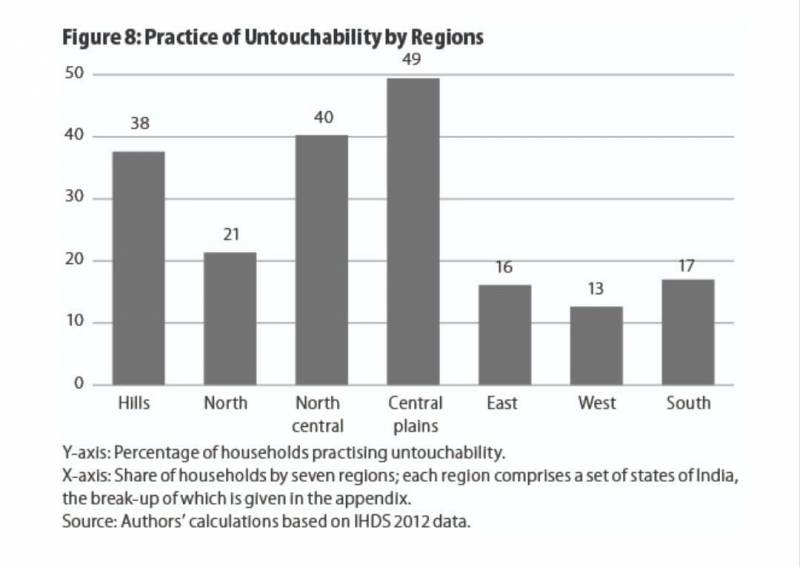More than 40% households in central & northern India practise untouchability: Study
By Aiswarya Sriram
Highlights
- Households practising untouchability was also high in central India, with almost 49 per cent practising the age-old tradition
Hyderabad: The country's leader Dr BR Ambedkar fought against untouchability, the Constitution forbade it way back in 1950, but untouchability, also termed a national shame, still rules to the roost in several parts of India.
A shocking 49 per cent of households in northern India practise this form of discrimination, reveals a study recently published in the Economic and Political Weekly Journal. Most of the southern states had less than 20 per cent of households practising untouchability, according to authors Amit Thorat and Omkar Joshi who calculated the percentage of untouchability using Indian Human Development Survey-II (IHDS) 2012 as the base.
Thorat is an Economics professor at Jawaharlal Nehru University (JNU), while Joshi is a doctoral scholar in the Department of Sociology at the University of Maryland. The authors divided their data into several parts to analyse the prevalence of untouchability in different segments of society. The survey was conducted by the National Council of Applied Economic Research (NCAER) and the University of Maryland across 42,000 households all over the country as a part of IHDS II. Here are the key findings:
The Rural-Urban divide
The survey revealed that 30 per cent of rural households followed the age-old practice of untouchability. In households in urban pockets, it came down to 20 per cent.
Based on Religion
Jain households were the highest with 35 per cent of those surveyed practising untouchability. The study says this could be because of Jains being strictly vegetarian and they might also not prefer, vegetarians who eat this entering their kitchen. Hindus came next with about 30 per cent of the people practising untouchability. Followers of Buddhism were the least touchy, with only 1 per cent of households practising untouchability.
Impact of Education
Untouchability fell as the level of education rose, found the study. Around 30% of illiterate people were still practising untouchability, while it dropped by 6 per cent among households with adults holding a graduation or diploma degree.
It was also observed that among communities like Bhramins, OBC, SC and ST, the number of households practising untouchability decreased as the level of education went up. The sharp decline in the rate of untouchability from 69 per cent to 48 per cent was seen among Brahmins as the level of education increased from primary to graduation.
Based on Income
The authors have divided income class citizens into five groups – Poorest, Second quintile, Middle quintile, Fourth quintile and Richest. Untouchability decreased as the graph moved from the poorest to the richest class. Among the poorest, 32.56 per cent of households practised untouchability and the number decreased to 23.35 per cent among the richest.
Based on Region
In north states about 40 percent households and in central states, about 49 per cent of households still practise untouchability, while only 13 per cent of households in western states believed in the discriminatory custom.

Amit Thorat, one of the authors of the study, told NewsMeter: “We have been working on this study since 2015. The partially completed study was also quoted by MP Sashi Tharoor. The study helps to understand how the practice of untouchability is still prevalent in society.”